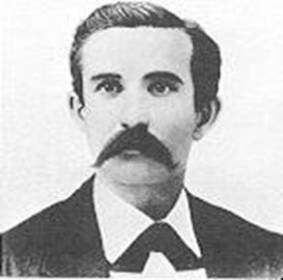On Nov. 13, 1843, Peter Whetstone walked from a store located on the square in Marshall, Texas and met his death.
Whetstone donated the land Marshall was built on.
Didn’t help.
A “Regulator” leader who believed Whetstone was a “Moderator,” followed him outside and shot him in the back.
Whetstone–one of my multiple-great uncles–entered the record book.
The Regulator–Moderator feud was the bloodiest in American history and Whetstone was one of the victims.
Most Americans have heard about the feud between the Hatfields and the McCoy’s.
Only ten men were killed in the Kentucky shootouts.
More than thirty men were killed in the Regulator–Moderator war, and it took Sam Houston and the Texas militia to stop the bloodshed
Sudden Death
While it remained a frontier, Texas was a brutal place where sudden death swept men away like tornadoes.
Nobody met in the street and drew their guns. This wasn’t dueling.
Men shot each other in the back, or suddenly pulled on each other after a few harsh words, then the loser’s friends went looking for the winner.
Mobs corralled suspected lawbreakers and lynched them from trees, telegraph poles and even railroad bridges.
But the feud was worse than other kinds of violence because it involved so many people.
Texas had many feuds, but the Regulator–Moderator war and the Mason County War were two of the most lethal.
Regulators versus the Moderators
The Regulators organized in Shelby and Harrison Counties, in East Texas, in 1841, to supposedly stop wide-spread stealing and killing.
But the Regulators killed anyone they even suspected, or had a grudge against, so the Moderators organized to stop the Regulators.
For almost four years, both sides lynched each other, ambushed each other (as with the Whetstone killing), and met in pitched battles.
Neither side was scared of the other. A judge and a sheriff were murdered, as was Robert Potter, a sitting senator for the Republic of Texas.
In March,1842, a posse of Regulators descended on Potter’s cabin, on Caddo Lake, and when Potter ran to the lake and jumped in, the Regulators waited until he surfaced and shot him to death.
Law enforcement could not stop the killing because it was “barebones,” according to Bill O’Neal, Texas State Historian.
Prominent citizens finally wrote Houston and begged for help, so Houston traveled to San Angustine in August, 1844, and issued a “Letter to my Countrymen.”
The letter was a veiled threat which ordered everyone involved in the feud to return home so “as will render it unnecessary to have recourse to such measures as would be as unpleasant to myself as they would be indispensable to arrest the unhappy conditions of things…”
The violence stopped (for the most part) and the militia arrested the feud’s leaders. Militiamen also occupied Shelby County.
Houston visited the arrested men at the San Augustine courthouse, and talked to them “as a loving father would talk to a lot of bad boys who had been quarreling among themselves,” according to Sandy Horton, a witness.
After paying bail, the leaders were allowed to return home.
The Mason County War
The Mason County War was a little more straightforward.
On May 13, 1875, Deputy John Worley arrested Tim Williamson and charged him with cattle rustling.
Twelve men with blackened faces attacked Worley and his prisoner and Williamson was killed.
Scott Cooley, a former Texas Ranger, then farming in Menardville, swore revenge for  Williamson.
Williamson.
The two men were close friends and Williamson was also Cooley’s sometime employer.
Cooley recruited friends to help and began gunning down men he believed responsible for Williamson’s death.
Cooley and his partisans killed from ten to twelve men, including John Worley.
Cooley shot Worley while he was working on his well, and scalped him, according to James B. Gillett, author of Six Years with the Texas Rangers.
The Mason County sheriff was so terrified he left Mason, never to return.
A portion of my novel, Scalp Mountain, is based on some Mason County War incidents.
Finally, state officials ordered Texas Ranger Major John Jones and Company D (forty men) to find Cooley.
But many of the Rangers had served with Cooley and did not want to arrest or kill him, and some actively helped Cooley evade arrest.
Finally, Jones gathered his men in ranks.
Jones asked that every man who could not, in good conscious, search for Cooley, to leave the rangers. He would give them honorable discharges.
Fifteen men stepped forward and asked for a discharge.
Some of Cooley’s co-conspirators were captured and sent to prison.
Cooley was jailed, but escaped, and soon died from “brain fever.”
This was the Texas frontier, a brutal place where more than one man boasted “I’ll die before I run.”
We live in culture that was born in defiance during the Texas revolution and continued that defiance during the Civil War.
We are a people who were punished by fire and atrocity during the Comanche wars.
We boiled in blood during endless frontier violence.
This is not a good thing, nor a bad thing.
But it’s who we are.
Julia Robb is the author of Scalp Mountain and Saint of the Burning Heart, both e-books. She can be reached at [email protected], at www.juliarobb.com, at www.iamatexan.com, at www.venturegalleries.com, at Pinterest and Goodreads.
————————
